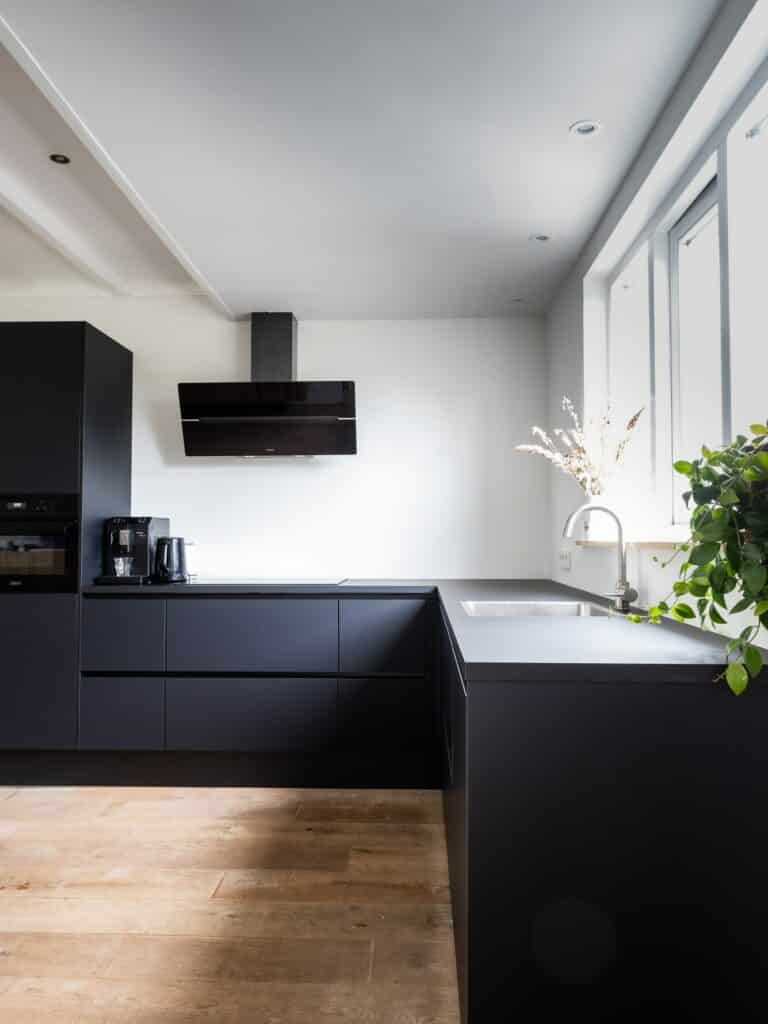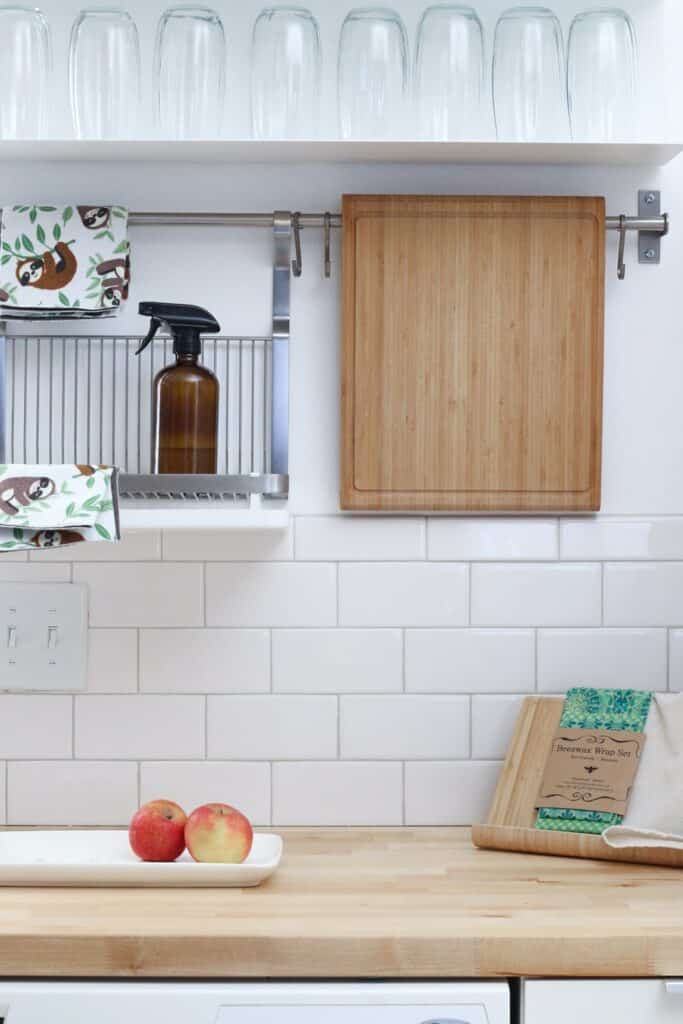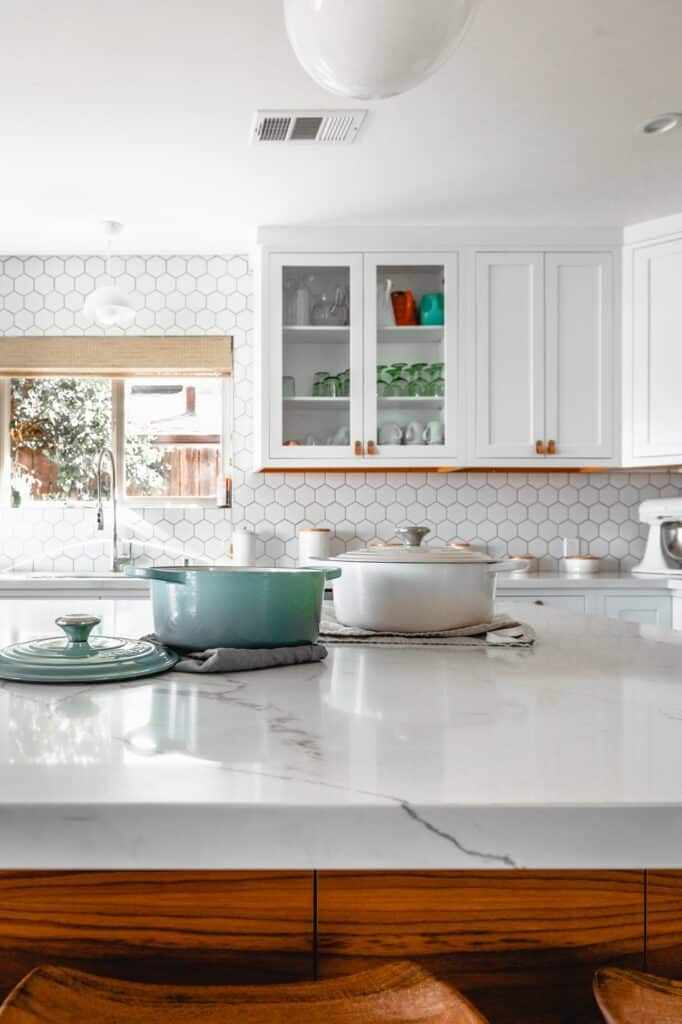Is it that difficult to prevent the growth of germs and bacteria on surfaces? Well, not if you apply antimicrobial coatings on them.
With technological advancements, humans keep on improvising new things that enhance their quality of life. As such, the world is filled with exceptional innovations and discoveries, antimicrobial coatings being one of them.
Besides preventing the growth of germs and bacteria on high-touch areas such as switches and doorknobs, antimicrobial coatings also make the areas stain-resistant, finger-print resistant, and U.V. protected. They have gained significant popularity over the past few years, which has made the antimicrobial industry one of the few billion-dollar industries in the world.
In this informative article, we will be telling you everything that one needs to know about antimicrobial coatings so that you have in-depth knowledge about them. Without further chit-chat, let’s get started!

What Are Antimicrobial Coatings?
Antimicrobial coatings are basically chemicals that prevent the growth of pathogens such as bacteria and germs through cellular membrane perturbation. In other words, they are an application of a microbial agent on a surface that hinders the growth of harmful microorganisms.
Why Do You Need Antimicrobial Coatings?
While researching antimicrobial coatings and why they are important in combating various diseases, we found that millions around the world pick up a Healthcare-Associated infection every year. This causes numerous deaths and makes combatting HCAI-related diseases a major issue for the healthcare industry.
Believe it or not, HCAI-related diseases are the 6th major cause of death in the Western Hemisphere, and the situation is much worse in third-world nations. As such, there is an urgency in the need to protect surfaces from microbes and germs, not just in healthcare but in all industries.
Everything is prone to germs, from food to walls, and they eventually make their way into the human body. Let’s face it; it’s not possible to always disinfect and sanitize surfaces to curb the growth of microbes.
So, in such a scenario, antimicrobial coatings turn out to be the best option there is. It is a simple and long-term solution.

What Are The Methods of Developing Antimicrobial Surfaces?
Antimicrobial surfaces can be made in two ways. The first method includes physical alterations, which consist of material modification and roughness of the surface.
On the other hand, the second method mainly requires a chemical change, which can consist of polymer grafting or using nanomaterials and coatings. These coatings contain antimicrobial additives and are self-cleaning.
What Are The Different Types of Materials Used in Antimicrobial Coatings?
Here is a list of the materials that are commonly used in antimicrobial coatings.
Copper and its various alloys
Dendrimers
Polymer brushes
Silver nanoparticles
Polycationic hydrogel
Graphene materials
What Are The Methods Of Testing Antimicrobial Coatings?
There is no definite process that can test the efficacy of antimicrobial coatings. However, different organizations such as the Japanese Industrial Standard (JIS), the American Society for Testing and Materials (ASTM), and a few others have developed test methods to meet industry standards.
These tests help evaluate the efficacy of antimicrobial coatings in fighting the growth of a wide range of microbes.
Where Can We Use Antimicrobial Coatings?
In this day and age, apart from just the healthcare industry, antimicrobial coatings are also used in several other industrial and consumer applications, including:
Housewares
Outdoors
Building products
Commercial purposes
Industrial projects
As we have previously mentioned, antimicrobial coatings are mostly used in the healthcare industry as they faces a major risk of HCAIs. They help in curbing the spread of microbes through high-touch areas such as doorknobs, and switches.
The coatings are further used on trays, medical instruments, medical electronics, surgical equipment, catheters, etc., to reduce the likelihood of infections during operations. On top of that, they are applied on hospital fabrics such as bandages, surgical masks, and gloves and on medical implants as well.
Further, these coatings are used on various buildings such as residential structures, restaurants, offices, schools, etc. Plus, they have an application in air handling systems such as fans, air-conditioning, heating, and ventilation units to maintain indoor air quality.
Not only that, antimicrobial coatings have made their entry into the food industry as well. They are used in food processing machines and in containers and utensils.
What’s more, for the textile sector, they help provide freshness and durability to the fabrics.

Benefits Of Using Antimicrobial Coatings
These are some of the benefits of using these coatings
-
Infrastructure Value
Not only do antimicrobial coatings protect the surfaces, but they also add to the value of the infrastructure as a whole. Such coatings allow organizations to offer a cleaner and safer environment for all the people working in it or visiting it.
Plus, it sends a strong message that organizations care about the work environment.
-
Increased Lifespan
Antimicrobial coatings increase the durability and longevity of materials by protecting them against damage caused by bacteria, odor, and discoloration.
-
Cost-effective
As it turns out, antimicrobial coatings tend to minimize maintenance costs to a bare minimum. When they are applied on a surface, they prevent leaching, discoloration, staining, and other factors that play a part in affecting the object’s visual appearance.
This saves users from incurring additional expenses on repair and replacements of their furniture.
-
Cleanliness And Health
Places that have large numbers of people, such as hospitals, schools, and offices, are at greater risk of infections. However, the presence of antimicrobial coatings on high-touch surfaces, such as furniture, railings, switches, and doorknobs, can prevent the spread of infections to a great extent.
Moreover, antimicrobial coatings add to the cleanliness by reducing germs and bacteria in the air.
-
Almost Eliminates The Use Of Disinfectants
The application of antimicrobial coating greatly minimizes the need to use harsh cleaning disinfectants or agents to deal with germs and bacteria in public places. This increases safety and reduces the risk of using such harmful cleaning agents inside medical clinics and schools.
-
Protection Against Microbes
Last but not least, these coatings protect against the formation of various disease-causing microbes such as molds, algae, fungi, and bacteria. We found that the use of antimicrobial coatings on high-touch surfaces prevents the growth of various microorganisms.
As long as the coatings remain on the surface, it becomes an unfavorable environment for the growth of microbes. Plus, they make the surface stain-free and corrosion-resistant, which is an added advantage.

Risks Of Using Antimicrobial Coatings
Even though there are numerous benefits of using antimicrobial coatings on surfaces, there are certain risks involved as well.
- Emits active ingredients that can cause health hazards in the future
- Active ingredients released from coatings containing copper, zinc, and silver have toxic effects on fishes
- May give birth to newly evolved microbes that are immune to antimicrobial coatings
Safe Use Of Antimicrobial Coatings
The SCENIHR tells us to use antimicrobial coatings wisely. As such, there has been a heavy demand for the Safe-by-Design concept that focuses on the need to design these coatings without hazardous materials. One of the key highlights of this concept is to curb the release of antimicrobial ingredients from the coating.
Plus, it also highlights the need for designing these coatings in a way that they eliminate only some specific microorganisms without causing harm to the other microbes. Antimicrobial coatings should be produced in a proper way where all the safety measures are taken care of. According to a study, hospital wastewater should be treated to prevent it from causing harm to marine life.
Fortunately, with ever-evolving technology, we have been able to produce ways to neutralize the harmful effects of antimicrobial coatings. Today, these coatings are being manufactured keeping safety as the top-most priority.
What Are The Differences Between Antimicrobial And Antibacterial Coatings?
Antimicrobial coatings prevent the growth of a wide variety of microbes, including fungi, viruses, and bacteria, while antibacterial coatings only prevent the growth of bacteria. As far as antimicrobial agents are concerned, they destroy those microorganisms that are pathogenic. On the other hand, antibacterial agents work by stopping the microorganism cells from adhering to the surface in the first place.
Market Of Antimicrobial Coatings
As per a report by Grand View Research, the international market of antimicrobial coatings was 2.4B USD in 2015. The report stated that the market was expected to grow at a whopping rate of 11.5% between 2019 and 2024. In 2019, the market was estimated at 2.8B USD, and by 2024 it is expected to hit 5.4B USD.
The market is expected to get a significant boost due to the COVID-19 pandemic. The main areas of application of microbial coatings are:
- Building and construction
- Food and beverages
- Textiles
- Mold remediation
- Air quality systems
- Medical
Governments of various nations are extremely worried about HCAIs. As a result, there is a surge in demand for antimicrobial coatings throughout the globe. The market is experiencing stable growth in Europe and North America, where governments are taking active measures to create awareness about the application and benefits of these coatings.
The United States is the largest market due to its high living and medical standards, and they have imposed strict rules to deal with HCAIs.

Leading Manufacturers Of Antimicrobial Coatings
Here is a list of the top manufacturers of antimicrobial coatings in the world.
-
Nano-Care
Nano-Care Deutschland AG is an internationally leading specialist in the production of ready-to-use high-tech coatings, such as antimicrobial coatings and their precursors. By combining innovative new materials with well-established foundation technologies, Nano Care creates intelligent hybrid systems that set new benchmarks in multiple market sectors.
-
Sherwin-Williams
Sherwin-Williams was founded in the U.S. in 1866 and is among the leading manufacturers of antimicrobial coatings. It has 3 business segments Performance Coating Group, Consumer Brands Group, and Americas Group, which serve industrial sectors, consumer goods, transportation, and building and infrastructure. This brand is widely popular across Europe, the Middle East, The Americas, and Asia-Pacific.
-
PPG Industries
PPG is another popular brand that is well-known for the manufacture of antimicrobial paints and coatings. Founded in 1833 and based out of Pennsylvania, U.S., this brand supplies products to a wide variety of industries including, chemical processing, automotive, construction, and manufacturing. It mainly operates through 2 business segments by the names of Industrial Coatings and Performance Coatings.
This company has over 156 manufacturing hubs spread over various continents.
-
RPM International
For over 70 years, RPM International has been dedicated to providing high-quality building materials, sealants, and coatings. The company operates in the antimicrobial coatings industry through its industrial business segment. Over the years, it has established its presence in powerful countries such as the UK, Spain, China, Germany, and Brazil.
-
AkzoNobel
AkzoNobel is headquartered in Amsterdam, Holland, and is well-known worldwide as a leading manufacturer of specialty chemicals. It delivers a wide range of products such as polymer, decorative coatings, oxidizing chemicals, etc. globally. The company has two business segments and operates in the antimicrobial coatings sector via its Interpon AM range of the Performance Coatings segment.
Additionally, it operates through numerous other brands such as Siikens, Dulux in over 80 countries. With a strong network of distribution, it has a very strong presence on all the continents.

-
Axalta Coating Systems
This company, too, is based in Pennsylvania and is popular for providing users with sustainable, colorful, and innovative solutions. However, today, they are more popular for manufacturing and distributing top-quality antimicrobial coating systems. Performance Coatings is the main business segment through which the company operates in the market of antimicrobial coatings.
Furthermore, it serves various sectors such as architectural and decorative, general industrial, transportation, and automotive. With over 45 manufacturing facilities and businesses in over 130 countries, Axalta Coating Systems is one of the most sought-after brands when it comes to antimicrobial coatings.
-
Sciessent LLC
Sciessent LLC is one of the global leaders in anti-odor and antimicrobial applications. It was founded in 1997 in Massachusetts, U.S., and serves in the core sectors of water, medical, industrial, and textile applications. Anti-odor, water repellant, and antimicrobial solutions are a core part of the company’s product portfolio. Some of the company’s major stakeholders include Delta, Sherwin-Williams, and Walmart.
-
Nippon Paint
Founded in 1881 and based out of Osaka, Japan, Nippon is yet another leading manufacturer of top-grade antimicrobial coatings. It has 80+ manufacturing hubs spread over Europe, America, and Asia and is well-known for delivering high-performance products and innovative coating solutions for a wide variety of industries. As of today, it has over 16,000 employees across the world.
-
E.I. du Pont de Nemours
This company is headquartered in Delaware, US, and operates in the antimicrobial coating industry through its industrial bioscience business segment. It offers high-quality antimicrobial solutions and biocides to prevent the growth of microbes. Currently, E.I. du Pont de Nemours is active in over 70 major countries, including China, Australia, Mexico, and Canada.
Future Of Antimicrobial Coatings
The industry of antimicrobial coatings is booming. With continued innovation and research, people experience innovative, safer, and better coating at a budget-friendly price. One of the main reasons behind all the hard work and research is the growing demand for these coatings in European and North American nations. But recently, there has been an increase in demand in other countries as well.
On top of that, the ever-increasing concern regarding hygiene and cleanliness in various professional sectors is another reason this industry is developing at a rapid pace. Today, a lot of doctors prefer using these coatings to disinfectants and cleaning agents.
So, it is safe to say that the demand for antimicrobial coatings will only rise from here and that they will be used more. We might even see these coatings used in literally every building to prevent the growth of microbes and support a healthy environment.
How long does an antimicrobial coating last?
A typical antimicrobial coating can last for up to 90 days.
What is the cure time for antimicrobial coatings?
Even though it only takes a few minutes for the coating to dry, experts recommend leaving it for at least 2 hours to let it properly bond to the surface.
Do antimicrobial coatings affect the color of surfaces?
If you apply it properly on the surface, it doesn’t cause any discoloration or residue.
Final Thoughts
We have come to the end of this informative guide; hopefully, it has helped you gain sufficient information on antimicrobial coatings.
Soon, people may start using antimicrobial coatings in hospitals, schools, and offices, instead of chemical disinfectants for combating microbes. Many organizations may start employing antimicrobial coatings to prevent the growth of bacteria and maintain a safe environment for their people.
These coatings have shown a considerable potential to minimize nosocomial infections. And with the improvement of its therapeutic effects, future antimicrobial coatings are expected to provide more benefits and integrate several other antibacterial effects.
With that, it’s a wrap. Stay safe and don’t forget to disinfect!


